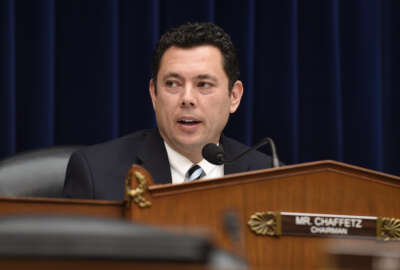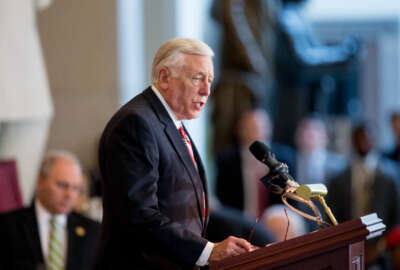
Agency CIOs: Government culture not a barrier to IT updates
Federal CIOs say when it comes to modernizing government IT systems, most of the workforce welcomes the change. But if the government truly wants to modernize, it...
True or false: The attitude toward federal IT modernization is a fearful one.
The answer isn’t so much false as it is “fluff,” said Social Security Administration Chief Information Officer Rob Klopp.
Not only that, but worry over an enormous price tag to bring the government’s computer systems into the 21st century is unfounded.
“All of this talk about culture being a giant barrier to moving forward is really, you know, kind of a bunch of fluff,” said Klopp, who joined SSA 18 months ago. “I think that if you give people the right tools and give them the right modern environment to go to work in and given them permission to go act like they work in Silicon Valley, instead of in the Beltway, basically you’re going to get the same kind of work out of them that people get out of people in Silicon Valley.”
“Programmers are geeks, whether they program in COBOL or Node.js,” Klopp added during a panel at the ACQUIRE Conference and Expo in Washington. “What I found was that when I came to these folks and said look, there’s a new way of doing this, and you probably missed a couple of generations, let’s just skip to a modern way of doing things, I found the excitement was palpable, these people were really excited about it.”
That doesn’t mean there aren’t some in government resistant to change, Klopp said, but that’s OK, because “the old stuff is going to be around for a while.”
Help from the geek squad
Updating IT systems is on the minds of agency CIOs, in no small part because of the $3.1 billion requested by the administration for fiscal 2017, to kickstart a revolving IT Modernization Fund.
Federal CIO Tony Scott has said it’s important not to try to force new technology into an aging system. He’s used an analogy of trying to put air bags into a 1965 Mustang, versus a newer Mustang that’s already got the safety features built in without jeopardizing the design.
“I think the technical community, they like the new car too, they like the new tools,” said Richard McKinney, Transportation Department CIO. “If there’s any cultural resistance it’s more at the programmatic level of people who think it’s always worked, why mess with it. The technical folks get it, and if you can actually appeal to them and show them ‘hey we can go off and do some exciting stuff,’ and get them on your side, that helps a lot. If there is any cultural resistance, the geeks can help you quite a bit.”
Scott has said the idea behind the fund is a one-time investment for “modernizing critical applications and infrastructure.”
Agencies would come forward with a business case and receive incremental funding as they hit deliverables and milestones. Over a five-year period, that agency would pay back to the fund, which would then allow for another round of money to be doled out to help agencies.
McKinney, compared the fund to a bank, rather than a “grant machine.”
“As a CIO, I look forward to being able to make that case about a system and its replacement and the [return on investment] to a body of folks who are in that business and understand. … Being able to make your pitch to people who have lived in your shoes, and understand what you’re saying, it shows a great deal of promise,” McKinney said.
The fund provides a way for government to “take a long-term look at trying to retire the technical debt” that’s grown over the past few decades, Klopp said.
In the government world, business cases are only 12 months long, and end up being billion-dollar projects.
“The cost of modernization probably isn’t what you think if we do it in a modern way,” Klopp said. “In Silicon valley there’s no such thing as a $100 million software startup. There’s something fundamentally wrong with thinking about these modernization things of government as being billion-dollar initiatives. They’re not, it’s a series of $50 million initiatives, of $25 million initiatives if we just go do it smart, instead of doing it the way we’ve been doing it for the last 20 years with the same people that we’ve been doing it with for the last 20 years, that for their own reasons want everything to be a billion-dollar project.”
Klopp said when it comes to modernization, agencies also need to understand that slow and steady doesn’t win the race.
“The reality is if you spent five years modernizing a system, what you’d find is you’d actually lost ground on technology in general,” Klopp said. “What we need to start thinking about is not taking our old legacy systems and incrementally modernizing them, we need to think about replacing them and jumping straight on to the technology curve.”
Copyright © 2025 Federal News Network. All rights reserved. This website is not intended for users located within the European Economic Area.
Related Stories






